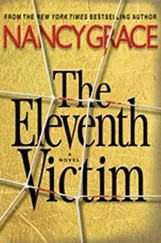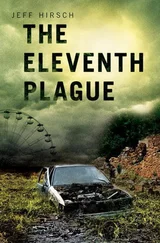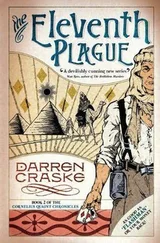Anthony Summers - The Eleventh Day
Здесь есть возможность читать онлайн «Anthony Summers - The Eleventh Day» весь текст электронной книги совершенно бесплатно (целиком полную версию без сокращений). В некоторых случаях можно слушать аудио, скачать через торрент в формате fb2 и присутствует краткое содержание. Жанр: Старинная литература, на английском языке. Описание произведения, (предисловие) а так же отзывы посетителей доступны на портале библиотеки ЛибКат.
- Название:The Eleventh Day
- Автор:
- Жанр:
- Год:неизвестен
- ISBN:нет данных
- Рейтинг книги:3 / 5. Голосов: 1
-
Избранное:Добавить в избранное
- Отзывы:
-
Ваша оценка:
- 60
- 1
- 2
- 3
- 4
- 5
The Eleventh Day: краткое содержание, описание и аннотация
Предлагаем к чтению аннотацию, описание, краткое содержание или предисловие (зависит от того, что написал сам автор книги «The Eleventh Day»). Если вы не нашли необходимую информацию о книге — напишите в комментариях, мы постараемся отыскать её.
The Eleventh Day — читать онлайн бесплатно полную книгу (весь текст) целиком
Ниже представлен текст книги, разбитый по страницам. Система сохранения места последней прочитанной страницы, позволяет с удобством читать онлайн бесплатно книгу «The Eleventh Day», без необходимости каждый раз заново искать на чём Вы остановились. Поставьте закладку, и сможете в любой момент перейти на страницу, на которой закончили чтение.
Интервал:
Закладка:
“Coming down the Potomac in Washington,” panelist Marvin Cetron recalled saying, “you could make a left turn at the Washington Monument and take out the White House, or you could make a right turn and take out the Pentagon.” “Targets such as the World Trade Center,” he wrote the following year, “not only provide the requisite casualties but, because of their symbolic nature, provide more bang for the buck. In order to maximize their odds for success, terrorist groups will likely consider mounting multiple, simultaneous operations with the aim of overtaxing a government’s ability to respond.”
That view did not appear in the published Defense Department report. “It was considered radical thinking,” said Douglas Menarchik, the retired Air Force colonel who ran the study, “a little too scary for the times.”
Khalid Sheikh Mohammed, who had plotted using planes as missiles to hit targets in the United States, was still at large, still plotting.
TWENTY-ONE
“YOU NEED THE CHARISMATIC DREAMERS LIKE BIN LADEN TO MAKE a movement successful,” a former intelligence analyst was to say. “But you also needed operators like Khalid Sheikh Mohammed who can actually get the job done.” KSM’s confederates dubbed him “Mukhtar”—an Arabic word to denote a leader, a man respected for his brain. The CIA came to consider him the “manager” of the September 11 plot.
He had been born in the mid-1960s in Kuwait, the son of immigrants from Baluchistan, a fiercely independent frontier region of Pakistan. His father was an imam, his mother a woman who got work preparing women’s bodies for burial. The driving force for KSM, though, was the cause of Palestine. Kuwait teemed with Palestinian exiles, and antipathy toward Israel early on became part of KSM’s makeup.
At eighteen, in 1983, Khalid traveled to the United States to study engineering at colleges in North Carolina. A fellow student remembered him as “so, so smart,” focused on getting his degree—though he took part enthusiastically in amateur theater projects. He also spent a lot of time at his prayers, and tended to reproach contemporaries who strayed from the Muslim diet.
KSM disliked the America he saw. The student body of one of the colleges he attended was largely black, and life in the South showed him the face of discrimination. He went back to the Middle East with a degree in mechanical engineering and memories of a country that he deemed “racist and debauched.”
Then, in 1987, he rallied to the fight to oust the Soviets from Afghanistan. At least one other brother, perhaps two—reports differ—were killed during the conflict. This was a family with a long-term commitment to jihad. At least half a dozen other relatives—KSM’s nephew the Trade Center bomber Yousef aside—have been linked to al Qaeda in the years that followed. Most now languish in prison.
In the early 1990s the cause of jihad took KSM across the world, twice to Bosnia, where tens of thousands of Muslims had been slaughtered as the former Yugoslavia collapsed into chaos, to Malaysia, Sudan, China, even Brazil. By late 1994, as he hatched terrorism with Yousef in the Philippines, KSM was nudging thirty. He was short, somewhat overweight, balding, and often—though not always—sported a beard. The beard changed shape from time to time, useful for a man who wanted to confuse pursuers.
Pursuers there were, once Yousef and his would-be bombers had been caught, but KSM made good his escape to the oil-rich Gulf state of Qatar. He found employment there, and powerful support in the shape of Sheikh Abdullah bin Khalid al-Thani, then the minister for religious endowments and Islamic affairs. Sheikh Abdullah had underwritten one of KSM’s visits to Bosnia. Now he reportedly saw to it that the fugitive was protected from the long arm of American justice.
Backed up as they were by the authority of a grand jury indictment, U.S. officials hoped Qatar’s government would assist in getting KSM to America. An FBI team that flew to the region learned, however, that the quarry was gone. According to the Qatar police chief of the day—himself a member of the royal family—KSM had been tipped off to the danger, given temporary refuge at Sheikh Abdullah’s private estate, then assisted in flying out of the country.
There was anger at the FBI and the CIA, and at Bill Clinton’s White House, but no effective follow-up. In spite of the offer of a $5 million reward and an “Armed and Dangerous” lookout notice, KSM remained at large.
Half a decade on, the year before 9/11, U.S. analysts received intelligence on an al Qaeda terrorist named “Khalid al-Shaikh al-Balushi,” (Khalid al-Shaikh from Baluchistan). The possible connection was noted at the CIA—it was common practice to refer to operatives by land of origin—but not pursued.
Two months before 9/11, KSM felt safe enough to apply for a visa to enter the United States, using an alias but his own photograph. The visa was granted the same day—just weeks after the CIA had received a report that he was currently “recruiting persons to travel to the United States to engage in planning terrorist-related activity.”
“Based on our review,” the director of Congress’s Joint Inquiry concluded that U.S. intelligence had “known about this individual since 1995, but did not recognize his growing importance … there was little analytic focus given to him and coordination amongst the intelligence agencies was irregular at best.” An executive summary by the CIA inspector general, grudgingly made public only in 2007, conceded there had been multiple errors, including a “failure to produce any [word redacted] coverage of Khalid Sheikh Mohammed from 1997 to 2001.”
SO IT WAS that KSM continued to range free until long after 9/11. His terrorist career would end only in the early hours of March 1, 2003, when a joint team of Pakistani and American agents cornered him at a middle-class home in the Pakistani city of Rawalpindi. A photograph taken at the scene of the arrest showed the prisoner bleary-eyed and unshaven, wearing an undershirt. “Nothing like James Bond,” CIA director George Tenet noted, and saw to it that that was the image fed to the media.
Accounts differ as to how KSM had been tracked down. Suggestions have included betrayal by an al Qaeda comrade—there was by then a $25 million reward—an intercept by the National Security Agency of one of the terrorist’s rumored ten mobile phones, or information gleaned from a high-level prisoner.
The capture of KSM was “wonderful,” its importance “hard to overstate,” said President Bush’s press secretary. “This,” House Intelligence Committee cochair Porter Goss exalted, “is equal to the liberation of Paris in the Second World War.” “No person other than perhaps Osama bin Laden,” the CIA’s Tenet has said, “was more responsible for the attacks of 9/11 than KSM.”
Sources let it be known that U.S. authorities “began an urgent effort to disorient and ‘break’ Mohammed.” For the first two days in captivity, still in Pakistani custody, KSM had reportedly “crouched on the floor in a trance-like state, reciting verses from the Koran.” He started talking only later, in the hands of the CIA.
The story the 9/11 Commission gave to the public of how the 9/11 plot evolved depended heavily on the accounts provided by KSM—and some other captives—in response to interrogation. The notes in the Commission Report reference his responses to interrogation 211 times. What readers had no way of knowing, though, is that most if not all of those responses were extracted by using measures the Bush Justice Department defined—in the words of a legal opinion provided to the CIA—as “enhanced interrogation techniques.”
Vice President Cheney had hinted right after 9/11 at what was to come. The authorities, he said on Meet the Press , intended to work “sort of the dark side … It’s going to be vital for us to use any means necessary at our disposal … we have to make certain that we have not tied the hands, if you will, of our intelligence communities.”
Читать дальшеИнтервал:
Закладка:
Похожие книги на «The Eleventh Day»
Представляем Вашему вниманию похожие книги на «The Eleventh Day» списком для выбора. Мы отобрали схожую по названию и смыслу литературу в надежде предоставить читателям больше вариантов отыскать новые, интересные, ещё непрочитанные произведения.
Обсуждение, отзывы о книге «The Eleventh Day» и просто собственные мнения читателей. Оставьте ваши комментарии, напишите, что Вы думаете о произведении, его смысле или главных героях. Укажите что конкретно понравилось, а что нет, и почему Вы так считаете.











